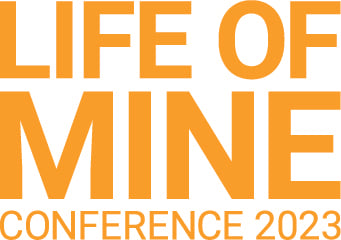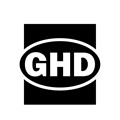The Multifaceted Challenges to Long-term Mine Planning
Australia’s mining, resources and energy future – a temperature check on today’s challenges and opportunities at the mine lifecycle backend
GHD is proud to be a platinum sponsor of the AusIMM Life of Mine 2023 Conference, which will be held in Brisbane from 2-4 August.
Ahead of the conference, GHD's expert leaders Michelle Kiejda, Technical Director – Environment and Chelsea Kavanagh, Sustainability Advisor – Energy and Resources, discuss the multifaceted and multidimensional challenges facing the mining, energy and resources sector. Diving into the current energy transition landscape, the two share their thoughts and leading approaches to long-term mine planning.
The benefits of strong environmental and project management backgrounds when leading and working with integrated and diverse engineering teams
Both Chelsea and Michelle have strong environmental backgrounds and credentials, and bring this to their roles when leading and working with integrated teams across diverse engineering disciplines.
For Chelsea, collaborating and bringing together ideas, methodologies and working with a diverse group of individuals with different skills, perspectives and attitudes, is an exciting and challenging space to operate in. “When a team has a good understanding of their roles as well as an appreciation of what others bring to a project, these differences benefit not only our clients, but also our people.”
Chelsea further referenced that collaboration and diversity drives knowledge-sharing, innovation and co-design, while leveraging specialist skills and unique experiences of individuals is necessary to achieve successful project and community outcomes.
Leading and working with multidisciplinary and integrated teams is also one of the things that Michelle loves about mine closure. “My environmental background certainly puts me in good stead to understand the key aspects of closure, and better interact with and manage independent and interdependent specialist studies with wider Environment, Social and Governance (ESG) imperatives in mind,” she said.
Specialist and discipline areas that professionals must focus on to best meet demand, bridge gaps and strengthen their skills
From conversations with most professional engineers, clients and stakeholders, it’s noted that Australia is currently facing a skills shortage. "Specialties in hydrogeology, geotechnical analysis and stability assessments, erosion/landform evolution modelling, cover system design (for example, tailings, overburden emplacement areas), decontamination, decommissioning and demolition are all currently in high demand,” Chelsea said, “this is in addition to a growing need for sustainability services to support businesses to meet their ESG strategies, plans and targets in the short, medium and long-term.”
Michelle added, “many aspects in the mining, energy and resources sector are reliant on interdependence, and that several priority disciplines, such as tailings storage facilities and landforms, require complementary specialist skills and experience, that can build on an existing skillset. Specialist disciplines such as sustainability practices, incorporating climate change impacts, and investigation into alternate land uses including renewable energy generation are also very much sought-after."
Australia’s focus on energy transition, mine closure and rehabilitation
Australia’s current energy and resource landscape is transforming to deliver cleaner, reliable, and affordable energy and power generation. It’s no doubt an exciting time to work and play a part in this industry, and Chelsea stated it was an incredibly compelling time to work in the sector, ahead of so much uncertainty, opportunity and the largest transition in our generation.
“I’m really excited about the role I, and our organisation GHD plays, in providing tailored solutions for the transition of mine assets and creation of our new futures, including renewables,” she said. “We’re solving the challenges of today while also reimagining opportunities for connecting commercial success, sustainability, and socio-economic value for an evolving society.”
During her career, Michelle has had the opportunity to be involved in the conceptual and detailed closure planning of a mine site that has closed and is under rehabilitation. “I provided necessary technical support throughout the rehabilitation process and saw first-hand how the site and mining operations transitioned into a completely rehabilitated mine site. They are now progressing well to meeting their completion criteria and it’s satisfying to know I’ve played an important part of that journey,” she said. “We are starting to see this happen more and more across Australia and can confidently play a part within the full mining lifecycle, while learning from and executing closure instead of just planning for it. This really is an exciting opportunity for us to be in the driver’s seat progressing change to ensure real community and environmental benefit and positive outcomes are delivered.”
Chelsea further reflected on some of the significant changes occurring towards the backend of the mining lifecycle and during asset/site transition. “Asset transition is being looked at more broadly than returning land to a safe, stable, and non-polluting state. It must go further to offer ongoing social, economic and/or environmental value,” she said. “We have seen this view reflected through recent changes to legislation across jurisdictions, particularly in Queensland.”
The selection of post-mining land use has an important role to play in regional transitions. However, considering post-mining land use alternatives in isolation risks overlooking regional aspirations. Taking a systems approach can further de-risk the transition, extending the consideration of land use beyond the mine to a regional scale. This means greater benefits can be yielded including brand value, reduced liability, economic benefit and a significant reduction in operational costs. Michelle added, “when thinking about how a closing asset plays a role in a whole system, we can then reach new heights by working with others to seriously explore different and creative opportunities.”
What can be learnt from other sectors and applied to mining projects
Work in the mining, energy and resources sector should not be limited or siloed to just lessons learnt and experiences for the same industry. Chelsea reflected, “there is great work coming from the Infrastructure Sustainability Council's Infrastructure Sustainability Rating Scheme. This demonstrates how an industry-wide framework, and their tools, can be applied to integrate sustainability into each phase of major projects delivery in a consistent way.”
Chelsea believes that taking a lifecycle approach is key to maximising sustainable outcomes as well as reducing risks and costs for a business. “Rather than reinventing the wheel, we can focus on how we can tailor and accelerate transferring such applications to the mining, energy and resources sector to enable outcomes to be realised and benefits achieved sooner.”
Looking beyond the life of the mine
GHD is committed to providing ongoing legacy beyond the life of the mine, including supporting meaningful research, and translating findings and data into practical on-ground action for the industry. We actively partner on initiatives, such as CRC TiME, to sustain genuine collaboration between the mining sector, and other stakeholders to help navigate and overcome significant mine closures and industry challenges.
Our Mine Closure and Asset Transition teams work with clients across the full spectrum of the mining lifecycle, bringing global knowledge, innovative and continuing benefits, and a local presence to address a project’s regulatory, community and environmental requirements.
GHD at the Life of Mine Conference 2023
GHD is looking forward to the AusIMM Life of Mine Conference, and contributing to the conversation about shaping our mining, energy and resources future and operations. Our thought-leaders strive to offer novel services, challenge the status quo and optimise operational processes.
We welcome sharing this knowledge and our experiences to advance the industry. Paramount to this is our benefit gained from continuing to learn from other experts in their fields, through events such as this one and the relationships we build.

